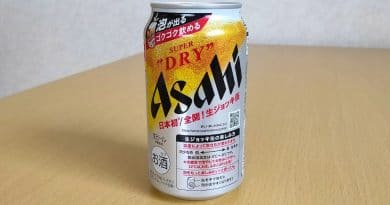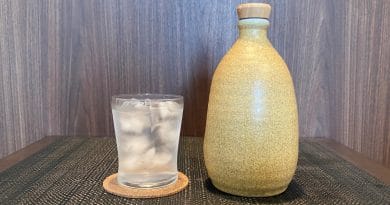How To Drink Sake Like A Japanese
Sake, with its wide variety of types and drinking styles, is now famous worldwide. However, so many types of sake make it difficult to know what to choose. And many people don’t know how to enjoy sake to the fullest. In this article, I will introduce how to drink sake properly like a Japanese.
Enjoy At Different Temperatures
The first thing you need to know about drinking sake is the temperature. If you know anything about sake, you must have heard that it is drunk by making it cold or warm.
This is because sake is a drink whose aroma and flavor can be changed by adjusting the temperature. And some sake brands also have their own optimal temperature.
That is actually one of the biggest reasons why sake is quite unique. And this is because sake has a wide range of drinking temperatures, from about 5 to 60 degrees Celsius.
Those temperatures can fall into four main categories: Reisyu (Cold), Hiya (Room Temperature), Nurukan (Warm), and Atsukan (Hot).
The following is an introduction to the characteristics of these four categories.
| Category | Name | Temperature (Celsius) |
|---|---|---|
| Reisyu (Cold) | Mizorezake (みぞれ酒) | 0℃ |
| Yukihie (雪冷え) | 5℃ | |
| Hanahie (花冷え) | 10℃ | |
| Suzuhie (涼冷え) | 15℃ | |
| Hiya (Room Temperature) | Hiya (冷や) | 20 – 25 ℃ |
| Nurukan (Warm) | Hinatakan (日向燗) | 30℃ |
| Hitohadakan (人肌燗) | 35℃ | |
| Nurukan (ぬる燗) | 40℃ | |
| Atsukan (Hot) | Jyokan (上燗) | 45℃ |
| Atsukan (熱燗) | 50℃ | |
| Tobikirikan (飛切燗) | 55℃ |
Reisyu (Cold)

Cold sake refers to sake that has been chilled to between 0 and 15 degrees Celsius. As a result, the aroma and sweetness of chilled sake become less noticeable. So it is ideal for those who want to drink sake in a refreshing way with less of its characteristic aroma and sweetness.
Ginjo-shu, in particular, with its gorgeous aroma and fruity flavor, can be served cold for a refreshing taste and to enjoy the gradual spread of the scent.
Also, because of its high Alcohol By Volume (ABV), sake does not freeze even when chilled to 0℃. However, since it will have a texture like a sherbet at 0℃, it can be enjoyed as “eating sake” in a different way. It is a must-try during the hot summer season.
Incidentally, the following names are given in increments of 5°C among 0-15°C.
- 0℃: Mizorezake (みぞれ酒)
- 5℃ :Yukihie (雪冷え)
- 10℃: Hanahie (花冷え)
- 15℃: Suzuhie (涼冷え)
Hiya (Room Temperature)
Hiya is sake at around 20-25 degrees Celsius. The Japanese character for “冷” means cold, but it actually represents sake at room temperature. That is a remnant of the fact that in the old days when there was no established way to cool sake, the coldest sake was at room temperature.
Sake with hiya is perfect for drinking fine sake because it reveals the authentic flavor. If it’s not well-made sake, you may feel it has an unpleasant taste. Hiya is the best way to drink sake with a mild flavor, such as Junmai-shu, or sake with properly polished rice, such as Seishu.
If you want to know the quality of each sake, this is the best way to try as hiya first to see how good the sake is.
Nurukan (Warm)
Sake that is 30 to 40 degrees Celsius is called Nurukan, which has been heated to about human skin temperature. At this temperature, sake becomes sweeter, more aromatic, richer, and mellower on the palate. Therefore, Nurukan is perfect for those who want to feel the sweetness and aroma of sake.
Since rice is the source of sake’s sweetness, Junmai-shu goes well with Nurukan as it gives a deeper flavor.
Nurukan is also named in 5°C increments, as follows.
- 30℃: Hinatakan (日向燗)
- 35℃: Hitohadakan (人肌燗)
- 40℃: Nurukan (ぬる燗)
Atsukan (Hot)

Sake that has been heated to between 45 and 55 degrees Celsius is called Atsukan. It tightens up the sweetness so that you can enjoy crisp sake. It also increases the spiciness of the sake, making it a good choice when you want a little more strong flavor.
Atsukan is refreshing and easy to drink differently from cold sake. So even if you are not a regular sake drinker, please give it a try.
Although Atsukan is the most common name, the name also changes depending on the temperature.
- 45℃: Jyokan (上燗)
- 50℃: Atsukan (熱燗)
- 55℃: Tobikirikan (飛切燗)
Enjoy In A Unique Way
Next, let’s take a look at how to drink sake with a twist. These ways are recommended for people who want to enjoy sake in a different way than usual. It is also suitable for those who are not yet used to drinking sake.
On the rocks
Sake is usually drunk as it is, but it can also be drunk on the rocks with ice, especially on hot summer days.
It is also good to add ice to the sake with a strong flavor or a high Alcohol By Volume (ABV) to dilute it. That is a pretty good way to enjoy sake that sake breweries also practice, so please give it a try.
With soda
If you are not a big fan of sake, you may want to try sake with soda. This is also a way of drinking sake that the brewery recommends. The soda makes it more refreshing and easier to drink.
In addition, sake with soda can be mixed with many different other drinks. Depending on the combination of sake and soda, you can enjoy many different forms of sake.
Please find your best ratio and try to find a delicious way to drink it.
Cocktail
Sake, made from high-quality water and ingredients, is also an excellent base for cocktails. In fact, there are various ways to serve it other than with soda.
There are many sake lovers who enjoy sake with unexpected combinations such as milk and tomato juice. Here are some examples.
- Milk x Sake
- Green tea x Sake
- Tomato juice x Sake (Red Sun)
- Beer x Sake (Sake-bomb)
- Coffee x Sake
How to make a sake bomb
Sake bombs are a popular way to drink in Japanese restaurants & bars outside of Japan, especially in the US.
It is popular among young people in the US and other countries as a party stunt. However, I have never seen anyone doing it in Japan.
Many Japanese people don’t want to drink sake that way because it takes away from its delicate taste.
It’s only for a party, so if you’re at a party, it’s fine. But if you’re at a restaurant in Japan, it’s probably best not to do it.
Trivia About Sake
Sip or shoot?
Basically, sake is not drunk in shots all at once but sip slowly and soberly.
In Japan, alcohol is meant to be enjoyed with food. So, sake should be drunk with fish to savor its flavor and aroma.
Yawaragi Mizu
If you are weak in alcohol, you will get deeply intoxicated if you drink only sake. Even if you are a strong drinker, you may find it difficult to appreciate the delicate taste of sake if you keep drinking it. This is where “Yawaragi Mizu” comes in. It has the same meaning as a “chaser”.
When you drink sake, if you have some Yawaragi Mizu in between, it will soften your drunkenness and prevent you from getting deeply intoxicated. Moreover, it also refreshes your palate and allows you to savor the delicate taste of sake.
When drinking sake, please have a bottle of Yawaragi Mizu next to you and savor it slowly.
How To Drink Sake At Home
When drinking sake at home, the most important thing is to adjust the temperature.
How to make sake chilly
The most common method is to chill it in the refrigerator. Since the entire bottle of sake is chilled in the fridge, it is the easiest and most recommended, with the advantage of drinking it immediately at a stable temperature.
The other way is to put a sake bottle in a bowl with ice cubes and chill it slowly. This way, the sake retains its flavor and taste and becomes a well-balanced, crisp cold sake.
As mentioned above, you can also drink it on the rocks with ice, but it will change the taste. So, if you want to enjoy the original flavor, the easiest way would be to chill it in the refrigerator.
How to make sake warm
The easiest way to heat sake at home is to use the microwave. Of course, heating sake in the microwave is not a bad idea, but it is not the best way too.
When using a microwave, heat is applied to the sake all at once. And that makes the temperature in a container or bottle uneven. The rapid heating can also result in a tense, irritating heated sake.
If you want to drink a more palatable and warm sake instead of a tingly one, please boil it in hot water.

Steps
The best way is to immerse a container such as a tokuri (sake bottle) filled with sake in a pot of hot water up to the neck.
- Fill the pot with enough water to cover the bottle
- When the water is at about 80°C, just before it boils, turn off the heat
- After pouring the sake into a bottle, place it in the pot and wait for 2 to 3 minutes
- Take out the bottle, put it in a glass and drink
If you wait 2-3 minutes to warm up a sake bottle (180ml), it will warm up to about 40-45℃. This temperature is called Nurukan (warmed) – Jyokan (heated), as explained above.
The temperature will vary depending on the material of the bottle you use and other factors.
A glass for sake
Sake vessels such as sake bottles (tokkuri), sake cups, and glasses are also crucial for tasting sake well. The surface area of the sake vessel affects the rate of oxidation and the way the aroma is released. The larger the surface area, the more likely the sake will oxidize and the more likely the scent will be lost. However, this is not a negative thing.
For cold sake, pouring it into a bowl with a large surface area and then transferring it to a glass produces a milder taste. On the other hand, pouring hot sake with spicy flavor into a smaller bowl will weaken the spiciness.
Recently, more and more people are drinking mild-flavored fruity sake in wine glasses.
How To Drink Sake At Restaurant
Almost every izakaya or restaurant in Japan has sake on their drink menu.
And unlike drinking at home, there is a kind of etiquette for drinking sake with other people.
Of course, I don’t think there are any Japanese people or stores that are strict with people from overseas. So as long as you can have fun and drink, you should be OK.
Having said that, if you enjoy sake with someone, why not try to master the Japanese way of drinking sake?

When someone pour sake for you
- Take a sip of the remaining sake in your glass before someone pours for you.
- While pouring, do not leave the cup on the table, but always hold it in your hand.
For an elegant look, hold the cup in your right hand and place your left hand under the cup. - Once the sake is poured, it is good manners to take one sip right there and then place the cup on the table.
When you pour sake for someone
- Hold the sake bottle firmly with your right hand and keep your left hand near the spout. Pour gently, making sure that the bottle does not touch the cup.
- From the beginning of the pouring process, pour in a thin, thick, and thin stream.
- At the end of the pouring process, gently turn the mouth of the bottle toward you to prevent the sake from dripping.
Morikoboshi

There is also a traditional way of drinking sake called “Morikoboshi”. A glass is placed in a square-shaped wooden cup, and sake is poured into the glass until it overflows.
Some high-quality Japanese restaurants serve sake in this Morikoboshi style. Then, you can drink it as follows.
- Pick up the glass by the mouth and take a sip or two until you can lift the glass
- Take the glass from the wooden cup
- Wipe the bottom of the glass
- Drink sake in the glass
- Transfer the sake from the wooden cup to the glass or drink from the wooden cup first
At first glance, it may seem vulgar to sip from a glass on the table using only your mouth without using your hands. However, it is an excellent traditional way to drink Morikoboshi sake. So, if you have the chance, please try that.
Things You Shouldn’t Do
Basically, alcohol is meant to be enjoyed by everyone. So each person should be able to drink as they want.
However, I would like to introduce some of the manners when drinking sake that you should not do, at least in Japan.
Look inside a sake bottle
You may be tempted to look into the sake bottle to see if there is any sake left. But this is not a very smart thing to do.
Shake a bottle
Some people shake the sake bottle to see if there is any sake left in it. However, this is not a good idea either. Also, if it’s warmed sake, it can make sake cool down.
Combine sake from different bottles
Collecting the remaining sake little by little and combining them into a single sake bottle will affect the temperature and taste of the sake.
Pour backhanded
The action of pouring with the palm facing up is a non-congratulatory gesture.
Put a cup upside down
Turning the cup upside down and placing it on the table is not only unhygienic, but it also makes the table dirty.
Pour sake to the fullest for someone
Pouring a good amount of sake into a glass can be difficult to drink, cause spillage, and be somewhat annoying to the recipient. Therefore, we should avoid pouring too much sake into a glass unless it’s for Morikoboshi style.
Summary

I’ve already explained how to drink sake in detail, but the most important thing is to enjoy it.
Try different methods to find the best way to savor sake for you.
Unlike sake, shochu can be drunk directly with ice or water and is one of Japan’s most popular alcoholic beverages. So, if you haven’t tried it yet, please give it a try.




